In 2024, the allure of coffee and tea sets transcends mere functionality, emerging as emblems of sophistication and a refined lifestyle. This trend reflects a deeper cultural shift where the ritual of tea and coffee drinking is elevated to an art form, demanding attention to detail in both selection and presentation. For businesses and enthusiasts in the Home & Garden market, staying attuned to this evolution is crucial. It’s not just about offering products; it’s about curating experiences that resonate with a growing base of discerning customers. Thus, understanding and adapting to these trends becomes pivotal for those aiming to excel in this niche yet expansive market.
Table of Contents:
1. Market overview
2. Different types and their features
3. Things to consider when selecting products
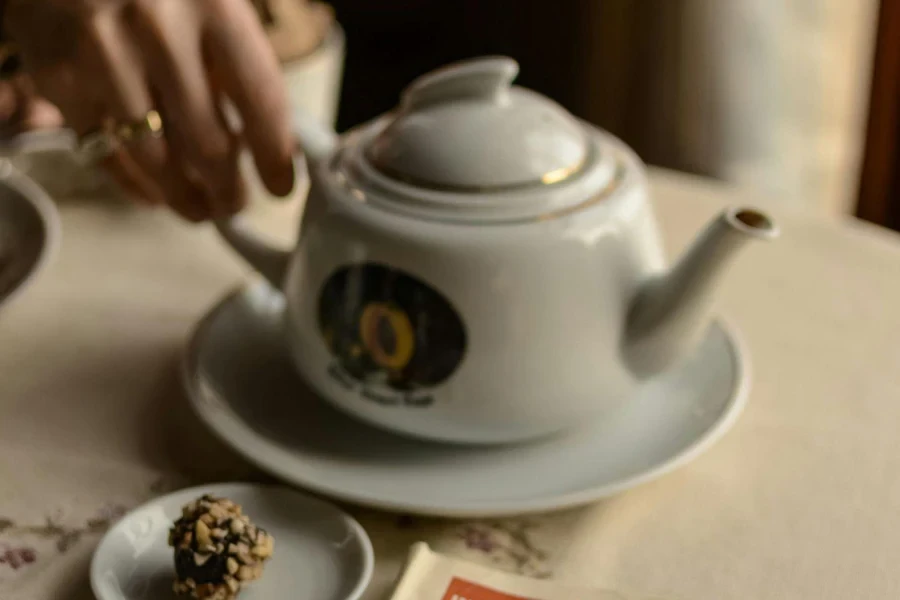
1. Market overview
In 2024, the global market for coffee and tea sets is witnessing a dynamic shift, reflecting a blend of cultural influences and technological advancements. The coffee market alone, according to Statista, is projected to grow annually by 4.61% from 2023 to 2028, reaching a market volume of US$110.7 billion in 2028. This growth indicates a significant interest in coffee consumption, which directly influences the demand for coffee sets.

The demand for tea sets varies across regions, with a notable interest in traditional, culturally inspired designs as well as modern, minimalist styles. Technological advancements in the manufacturing processes of tea and coffee sets are enhancing product quality and variety. The market is also seeing a surge in innovative designs that cater to the evolving preferences of modern consumers, who value both aesthetics and functionality. The fusion of traditional craftsmanship with contemporary design elements is creating a diverse array of options for consumers, making the selection process more nuanced and personalized.
2. Different types and their features
The realm of coffee and tea sets in 2024 is marked by a rich diversity, encompassing traditional, modern, and culturally specific designs that cater to a wide range of preferences. Each type, with its distinct materials and design elements, offers unique aesthetic and functional qualities.
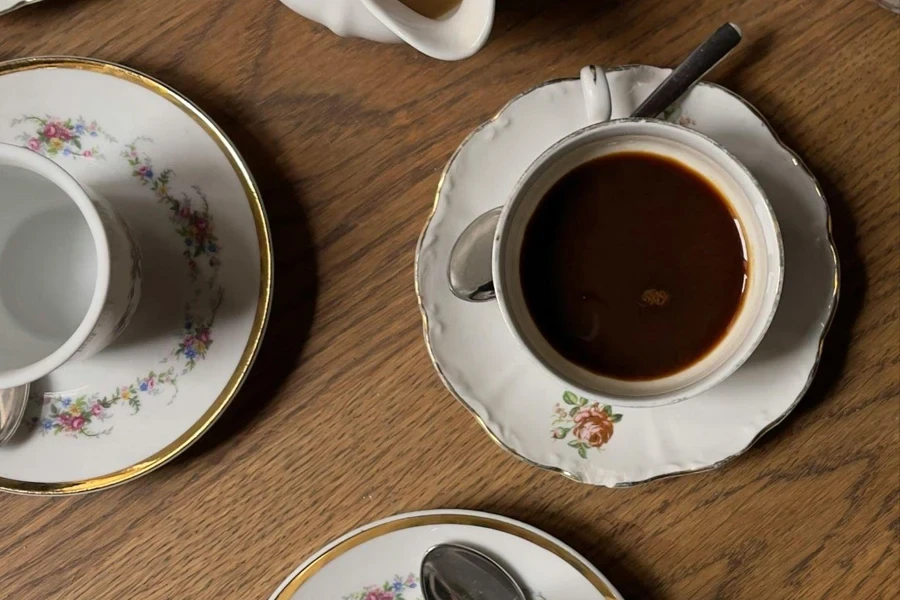
Traditional sets: Traditional tea and coffee sets, often made of fine porcelain or bone china, are known for their elegance and timeless appeal. Bone china sets, recognized for their snow-white color and resistance to chipping, are a classic choice for formal occasions. Porcelain sets, on the other hand, are favored for their bright white appearance and robust quality, despite being slightly heavier and more brittle than bone china. Traditional sets often exhibit ornate patterns, delicate floral designs, and gold or silver accents. The craftsmanship focuses on intricate details and elegant forms. Royal Doulton sets, for instance, often feature hand-painted designs and classic motifs, while Wedgwood is renowned for its iconic blue and white Jasperware with neoclassical figures.
Modern sets: The modern design spectrum of coffee and tea sets is broad, ranging from minimalist to avant-garde styles. These sets often employ innovative materials like tempered glass or stainless steel, appealing to contemporary tastes. Brands are increasingly experimenting with unconventional shapes and bold color schemes, moving away from traditional designs to create pieces that double as functional art. Design elements are characterized by clean lines, minimalist designs, unconventional shapes, and the use of non-traditional materials to add to their modern appeal. Alessi is a brand of this type, known for its innovative and playful designs, often collaborating with renowned designers. Bodum sets stand out with their functional simplicity and focus on transparent materials that showcase the beauty of the brew
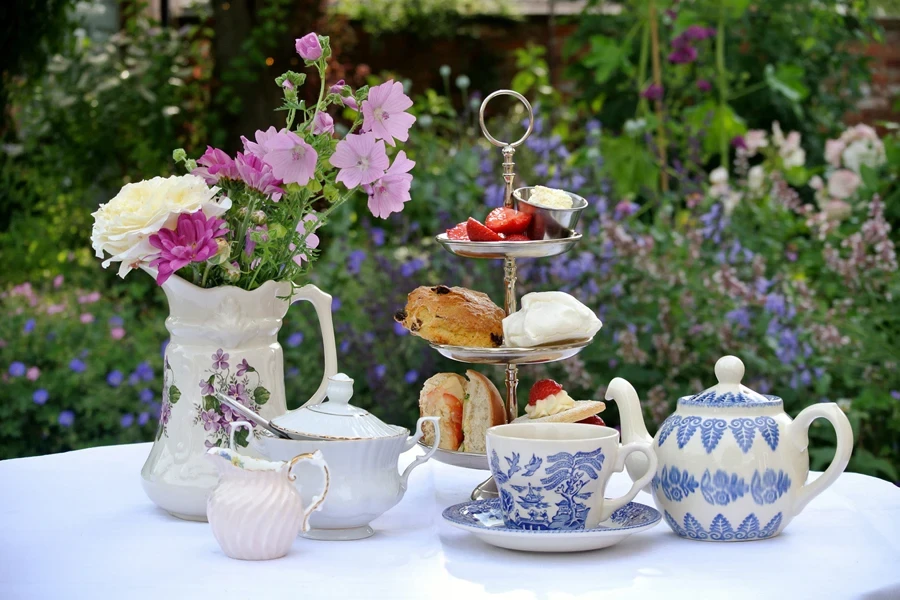
Culturally specific designs:
English sets: The quintessentially English tea set is characterized by delicate designs and is often made of fine china or porcelain. These sets are typically adorned with floral patterns or pastoral scenes, exuding a sense of refinement and tradition. English sets usually feature intricate detailing with pastoral or botanical themes, often in soft pastel shades. For instance, Spode’s designs are steeped in rich history, often featuring detailed scenes and floral borders, while Royal Albert is famous for its signature rose patterns, lending a quintessentially English charm.
Japanese sets: Japanese tea sets are usually smaller and crafted with a focus on the ceremonial aspect of tea drinking. They often feature ceramic or porcelain construction with minimalist designs, reflecting the Zen philosophy of simplicity and naturalness. Japanese sets emphasize natural materials, subtle colors, and uncluttered aesthetics. Designs are often inspired by nature and traditional Japanese art. Kotobuki’s sets often include hand-glazed ceramics with earthy tones, whereas Hario focuses on functional yet elegant glassware, reflecting a modern take on Japanese minimalism.

Chinese sets: Chinese tea sets are known for their intricate artwork and are predominantly made of ceramic or porcelain. These sets often incorporate traditional motifs and are used in the ritualistic Chinese tea ceremonies, emphasizing the cultural heritage. Traditional Chinese sets are characterized by ornate decorations, with motifs including dragons, phoenixes, and Chinese landscapes. Yixing sets are particularly notable for their purple clay construction, with each piece being unique and often reflecting the personal style of the artisan.
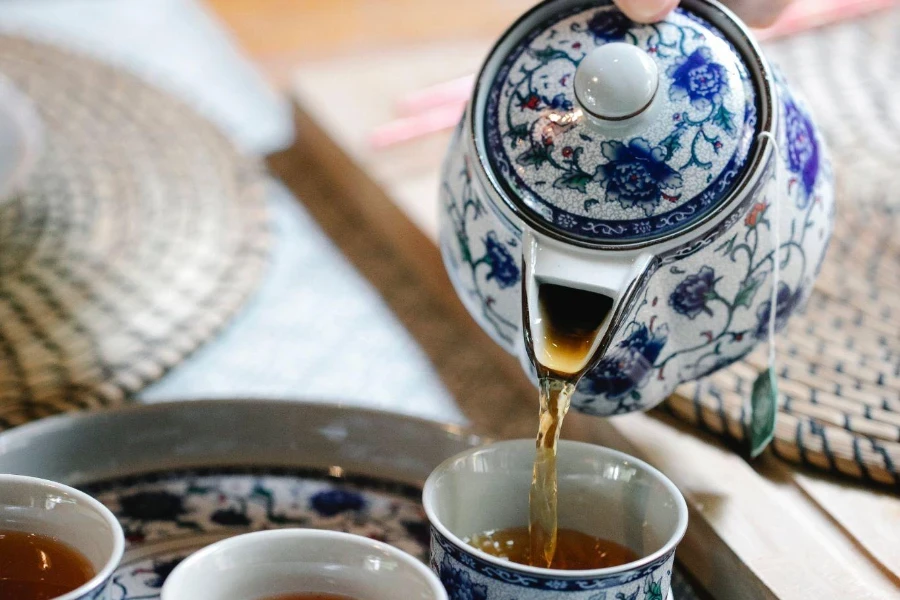
Moroccan sets: Vibrantly colored and often made of metal or ceramic, Moroccan tea sets are distinguished by their intricate patterns and bold designs. They are typically used to serve mint tea and are an essential part of Moroccan hospitality. Bright colors and intricate geometric patterns are a hallmark of Moroccan sets. They often include metallic finishes, especially in brass or silver. Chabi Chic’s Moroccan sets are distinguished by their vibrant colors and detailed hand-painted designs, often inspired by the rich cultural heritage of Morocco.
3. Things to consider when selecting products
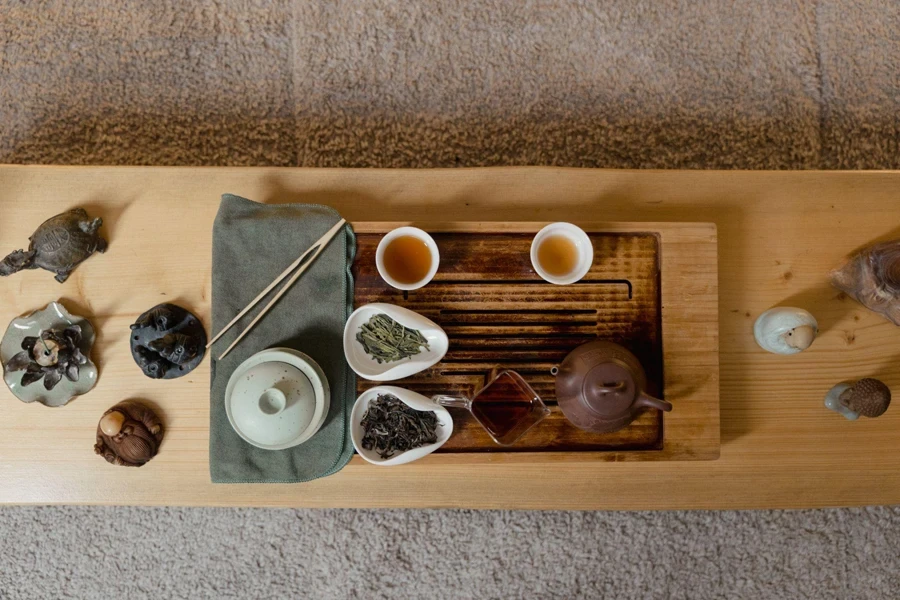
The selection of coffee and tea sets in 2024 is a nuanced process that involves balancing aesthetics with practicality, cultural relevance with personal or commercial suitability, and durability with ease of maintenance. By considering these factors, businesses and enthusiasts can choose sets that not only enhance the experience of tea and coffee drinking but also stand the test of time.
Selecting the right coffee and tea sets in 2024 requires careful consideration of several key factors that extend beyond mere aesthetics. Businesses and enthusiasts need to weigh aspects like durability, design, cultural relevance, functionality, and suitability for different types of tea and coffee to ensure they are choosing the best products for their needs.
Durability: The longevity of a tea or coffee set is paramount. Sets made from bone china or high-quality porcelain, known for their strength and resistance to chipping, are ideal for regular use. Bone china sets offer durability while maintaining elegance. For more robust options, modern materials like tempered glass or stainless steel can be considered, especially in high-usage commercial settings.
Design and cultural relevance: The design of a tea or coffee set should resonate with the cultural context it’s intended for. For instance, a Japanese tea set, typically smaller and with minimalist designs, would suit a setting where the tea ceremony is a focal point. Similarly, an English tea set with floral designs might be more appropriate for a traditional high tea setting. The design should not only be visually appealing but also reflect the cultural practices associated with tea and coffee drinking.
Functionality and suitability: The set’s functionality should align with the specific types of tea or coffee it will be used for. It is highlighted that different teas require different types of pots and cups; for instance, delicate teas like white or green might be best served in lighter, more refined sets, whereas a robust black coffee might be better suited to a sturdier, more substantial mug. The functionality also extends to ease of maintenance – dishwasher-safe and microwave-safe options might be preferred for ease of use.
Balancing aesthetics and usability: While the visual appeal of a tea or coffee set is important, it should not overshadow usability. A set that looks beautiful but is impractical or delicate can limit its use. A balance between aesthetic appeal and practical functionality is essential. For example, a beautifully designed set that is also ergonomically crafted ensures both visual delight and comfortable use.
Maintenance considerations: Maintenance is a critical aspect, especially in a commercial setting. Sets that are easy to clean and maintain, and that retain their appearance over time, are more practical. Materials like ceramic are easy to clean and don’t stain easily, making them a suitable choice for sets that will see frequent use.
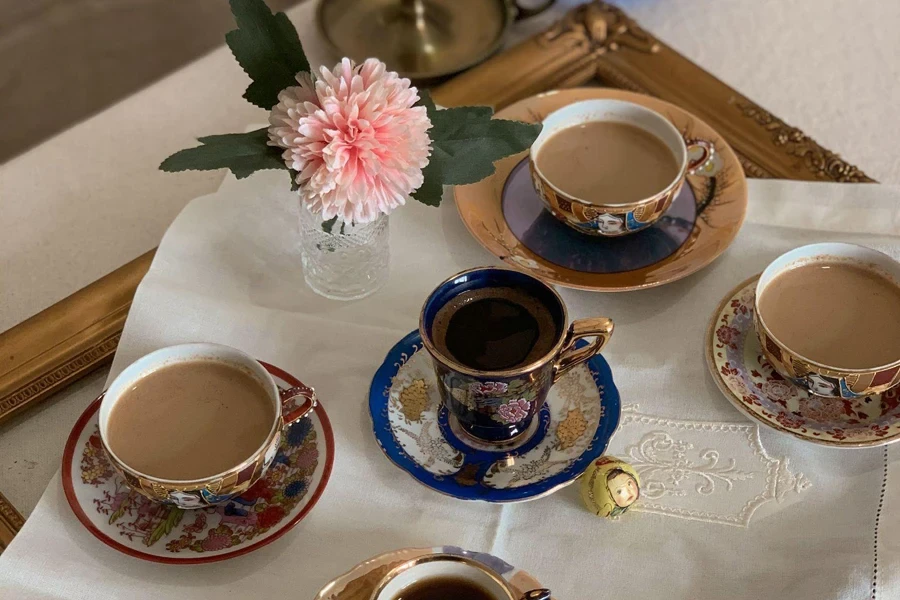
Conclusion
In 2024, the selection of coffee and tea sets transcends mere functionality, reflecting a harmonious blend of aesthetic elegance and practical utility. As we’ve explored, the market offers a plethora of choices, from traditional porcelain and bone china sets known for their timeless beauty and durability, to modern and culturally specific designs that cater to diverse tastes and ceremonial practices. The key to making a wise selection lies in understanding the intricate balance between durability, design, cultural relevance, and functionality, ensuring that the chosen sets not only captivate the eye but also fulfill the practical demands of tea and coffee serving.
For businesses and enthusiasts alike, the careful selection of these sets is not just about adding items to a collection; it’s about embracing a piece of culture, a touch of sophistication, and a commitment to quality that resonates with the evolving trends of the coffee and tea world. In this landscape, the right coffee and tea sets become more than just serveware; they become a statement of style and a testament to the discerning tastes of their owners, perfectly blending the art of aesthetics with the science of practicality.




